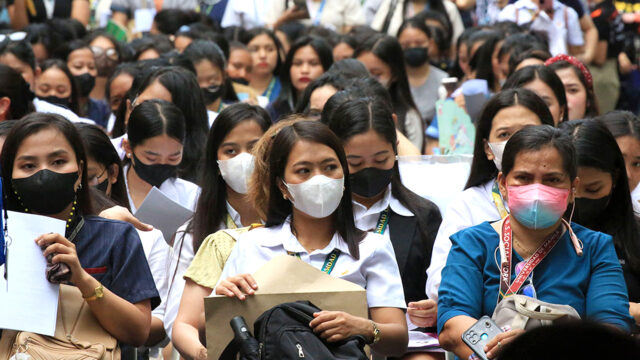Pangilinan sees chance to attract supporters amid UniTeam discord
ONE of the main figures of the opposition in the Philippines has called for openness among their ranks to any dialogue with those supporting the personality-driven alliance of President Ferdinand R. Marcos, Jr. and Vice President Sara Duterte-Carpio as it may tend to a shift in political tides.
Speaking on Thursday, former senator Francisco “Kiko” N. Pangilinan of the Liberal Party said insulting words aimed at people who backed the so-called UniTeam alliance in 2022 polls does “not help advance the cause we fought for then and continue to fight for now.”
In particular, Mr. Pangilinan was referring to social media posts and memes with the phrase, “tama nga kami” (we are correct) and followed by the phrase “tanga kami” (we are stupid).
There have been calls for opposition forces to recalibrate their strategies to expand their bases in the face of the word war between the President and his predecessor, Rodrigo R. Duterte, which is believed to widen the gap between Mr. Marcos and Ms. Duterte-Carpio, who both ran under a platform of unity in the 2022 elections.
“We need to persuade and convince. We do not need to ridicule and insult,” Mr. Pangilinan said. “We need to communicate and listen, not insult and start a fight.”
In a rally in Davao City last Sunday, Mr. Duterte called his successor a “drug addict” and his son, Davao Mayor Sebastian Z. Duterte, publicly asked Mr. Marcos to resign. The following day, Mr. Marcos remarked that his predecessor’s tone could be a result of fentanyl — a drug Mr. Duterte previously said he had taken as a pain reliever.
While the President has since said he would maintain Ms. Duterte-Carpio in his Cabinet and, in turn, the Vice President thanked Mr. Marcos for his trust in her, their coalition is seen by opposition forces as an opportunity to provide political alternatives to the public.
“A divided UniTeam means a division in their numbers which is ultimately a good opening for the opposition — old or new,” WR Numero Research chief executive officer and President Cleve V. Arguelles said in a Facebook Messenger chat.
Mr. Arguelles stressed that getting elected to power “is a math game as much as it’s a battle of ideas and platforms.”
“If we look at past polling data and election results, the Marcos and Duterte factions when divided can mobilize less numbers than what they currently enjoy. Like around 30% each,” he said. “That leaves the rest of the country, at around 40%, to be convinced that a country led by the opposition leaders is a country better governed.” — Kyle Aristophere T. Atienza

![Kiko-Pangilinan [philstar]](https://www.bworldonline.com/wp-content/uploads/2024/02/Kiko-Pangilinan-philstar-640x360.jpg)










